|
TennisOne Lessons Power First Training Dr. Ray Brown In the era of Evert and Conners, stroke technique was the primary subject of tennis camps, private instruction, and articles on tennis. Instruction of the 70's and before was organized around a consistency-first theory. In the early 1980's, there was a paradigm shift in the professional ranks from consistency-first to power-first. The reason for this successful shift was that the power-first theory, when properly taught, assures consistency as a by product, almost like getting consistency for free. However, most instruction was still based on a consistency-first theory because only a few coaches understood the power-first approach that assured consistency. To a great extent the consistency-first theory is still the dominant approach today. However, for the power-first method to become universally accepted as an instructional theory, an understanding of the keys to the power-first approach that assures consistency is needed. In this article we examine why power-first is the correct approach, and explain many of the key elements needed to be successful in developing players using the power-first approach.
A key fact that recommends the power-first approach is that there are numerous ways to teach consistent play at intermediate speeds, none of which are stable (consistent) when using power. This is why many pushers never become power players. Another fact to recommend power-first is that if you don't have the ability to hit with power, you can never learn to control it. In short, you can never learn to control something you do not have in the first place. This means that by teaching consistency first there is a high probability the player will never be able to play with consistent power. The reason for this lies in physics and in particular, the nonlinear nature of tennis. The first fact is that the law for every action, there is an equal and opposite reaction comes into play in a significant way when using power that may never appear when developing consistency. Here is the short story: First, note that a tennis ball is struck by a racquet held in the hand, which, in turn is attached to the shoulder, which is near the top of the body. Second, note that the forces above the waist that must be used to accelerate the racquet to high speeds must generate equal and opposite reactions that diffuse through the body down through the waist, hips and and into the legs. If, at any point along this path, control of the body from the waist down is imprecise by even a small fraction, the speed of the stroke will result in a large error in the ball path. This in turn produces an unforced error. Stated in a less formal way, power tennis is very sensitive to small errors in control of the body, especially from the waist down. There is a curious side bar to this story. Power tennis and Chaos Theory share a common property which is the butterfly effect (it is related to the movie of the same name). While there are various formulations of this effect, a common one found in the literature is the notion that small changes in a starting point of an action can result in dramatic changes in the outcome. This is true of both power tennis and the natural phenomena of Chaos. To see the exact relation to chaos, just have a consistent player who has never used power hit a dozen balls as hard as they can.
Just as the use of power was a paradigm shift from consistency-first in playing professional tennis, the power-first theory requires a paradigm shift in instruction away from consistency-first methods. How our approach must change is this: If we are to teach power tennis successfully, there must be considerably more attention given to developing the control of the stroke from the waist down that is presently being done in most instructional venues because this is a significant source of the "chaos." In fact, it could be argued that, to play power tennis, control of the body from the waist down is even more important than the quality of the player's stroke technique from the waist up. What has led us to this observation about power tennis was two results. One is that we carried out the most extensive rigorous scientific analysis of power tennis technique ever conducted over the past ten years to determine exactly how the modern ground stroke was produced. We backed up our findings by demonstrating the results on camera with state-of-the-art doppler radar. The second finding was that In spite of being able to teach a player exactly how to hit an 80mph forehand consistently from the baseline when fed balls that did not require that they move very far, we found that they still could not produce a consistent power rally from baseline to baseline. The inescapable conclusion is that something subtle was being overlooked. It was after an extensive experimentation and analysis period that we identified the fact that very small and subtle errors in the control of the body from the waist down was the source of large errors when rallying, at high ball speeds, from baseline to baseline. In conjunction with this fact is that video analysis also revealed that when playing a point at the professional level today, 90 percent of the time is spent in precision body movement and only 10 percent of the time in actual stroke execution. To confirm this result we conducted an analysis of the elements of body control needed to assure consistency in power tennis. We designed instructional techniques to develop these elements of body control and began teaching them. The result, the unforced errors in power tennis rallies diminished dramatically. Our analysis showed that teaching the power-first method requires three physical instructional components. The first is obvious: correct power stroke technique. The second is precision movement skills, the third is physical endurance. There is also a mental skill component that will be addressed in a separate article. Precision Body Movement Correct power stroke technique has been explained in previous articles, so we only discuss the other two factors in this article. We address the easiest component first, endurance. Clearly if you get tired, your ability to control your body will diminish and the errors in high speed rallies will correspondingly increase. Hence an endurance program is essential for teaching the power-first method. A key point is that if the precision body movement program is properly constructed, it will ensure endurance as a by-product. Thus we turn our attention to the subtle component, precision body movement. To carry out the analysis needed to construct a precision movement program for the power-first method, it was necessary for us to analyze player movements in detail. While there is an abundance of data from TV sources, we also included a hands-on study of four players. One was a former top 100 WTA tour player (Dawn Buth), another was a top 600 player as a junior (Ana Radeljevic), the third was the #2 player on a Division I college team (Kendall Swenson) and the fourth was a former highly ranked junior who elected not to play college tennis (Meredith Dukes). We filmed Meredith 10 years after she graduated from high school. As a reference point we used Dawn Buth, former top 100 WTA tour player and four time NCAA champion in doubles and team competitions. In addition, we have conducted numerous other studies of players we have put through our power-first program and refined the power-first method based on the success in developing these individuals into power-players. Based on this work we have identified and refined over a dozen exercises to develop waist-down precision movements that are essential for teaching the power-first method. We describe only 12 of these here. They are: (1) Ballistic recoil in the feet, (2) the ability to arrest lateral movement and stabilize the body for stroke execution, (3) power component in the thighs for body stability when executing the stroke, (4) agility and precision in the feet for fine adjustments (as little as five inches) to the ball, (5) cross step and (6) side shuffle for recovery, (7) first step speed for pursuit, (8) back peddle for reversing position while tracking the ball trajectory (9) precision balance, (10) core strength for fusing the upper and lower halves of the body during stroke execution, (11) core acceleration to produce controlled power, (12) leg strength for thrust and rotational power.
We do not claim that our list is complete as the analysis of tennis played at high speeds is an ongoing enterprise. However, these twelve movements are essential to use power consistently. Also, there is a list of movements above the waist not including stroke technique that will be addressed in a separate article. The design of exercises to develop these movements is important and to be complete, we researched three academies (van der Meer, Bollettieri, Evert) and the seminal work of Pat Etcheberry. Here we describe a representative set of exercises we have designed based on our research. Where possible, we have adopted exercises that are available form sources such as Dr. Yassin, or the Etcheberry DVD's, so as not to reinvent the wheel. Note that in every exercise, the player is holding their racquet. This is because tennis is physically asymmetric: the racquet hand is a different weight than the other hand. Our exercises reflect this. A cautionary note: using these exercises may require special training to avoid risk of injury because they are very physically demanding. The ideas in this article are provided for informational purposes only and we are not responsible for any injuries incurred by their misuse. (1) Ballistic recoil in the feet is developed effectively using the Etcheberry jump test as an actual exercise. This exercise consists in a player jumping over a string held about 18 inches above the ground as many times as possible in 10 - 20 seconds. Many variations are possible. We conduct this exercise using a professional gymnastics mat over 1 inch thick to protect the player's knees from injury.
(2) Controlling lateral movement is developed using the following exercise: Place two cones 18 inches apart on the singles sideline and on the service line (sideline to sideline is also good). Starting with the player in the middle, the player turns and moves to the right hand cones and simulates a stroke being careful to have the racquet move over both cones. Then they recover with a cross step and shuffle to the center with a split step to simulate the ball being struck by their opponent. They then turn to the left and move to the left most cone pair and simulate a stroke as before. This exercise can also be used for (7) first step development and (5) cross step and (6) side shuffle as well. The exercise is run for 30 seconds with 20 seconds rest to simulate playing conditions. There are two variations of this exercise. One focuses on coreography and precision, the other on endurance. Key points are that the player should move as quickly as possible so as to build up speed before arresting the motion using the outside foot. Also, the player should be careful to reach a complete stop before the stroke and then quickly reverse direction after, not during, the stroke.
(3) A lunge exercise is essential using an unstable base.This simultaneously develops the "static" strength control to have the thigh support the entire body weight as well as ankle strength and stability. One may use a ladder or any raised structure to force the entire weight onto the front leg. Clearly, this exercise develops both thigh strength, ankles, and balance. In addition, we use waist-to-ankle resistance bands to build "dynamic" strength and control while moving to the ball in a crouching position. (4) Dots exercises have become so institutionalized that one can buy the mats on the web with the dots already embedded in the proper places. Football teams use very large mats whereas for tennis small mats are better. We supplement the nearly static agility exercises using the dots mats with 60 foot ladder drills for dynamic agility. Both exercises aid in the development of the fine foot movements needed to make adjustments to the ball as little as five inches. This exercise is necessary because the difference between a power hit and an average stroke is as little as a five inch adjustment in foot position before stroke execution. (8) We combine back peddling with forward movements using a cone exercise where the player must simulate hitting five shots. The forward distance of the exercise is 30 feet and the lateral distance is half the singles court. A player should be able to repeat this exercise nearly three times in 30 seconds.
(9) For precision balance training we use rubber balance beams spanning 30 feet obtained from a medical rehabilitation supply store. The exercise is heel-to-toe. One must be sure the player does not run over the beams as this will defeat the purpose of developing precision balance. As before, the player must carry their racquet to develop asymmetric control of the body. Additional variations require the player to hold a medecine ball in front of them while they walk. (10) For gross core strength we use conventional medicine balls of varying weights and in several different ways. We emphasize that the medicine ball cannot be used to develop the all important ballistic rotation speed ( core acceleration) that is controlled from the core . The movements are much too slow. (11) For core ballistic acceleration we use a dropped ball exercise with a RADAR to measure ball speeds for instant "biofeedback." We have been unable to find any exercise that will duplicate the core development strength provided by actually hitting a ball at high speeds over and over. The importance of the radar feedback cannot be over emphasized. It provides instant feedback that allows the player to converge on the correct stroke and core control needed for high ball velocity simultaneously! Our target speed is 80 mph from a dropped ball. (12) For leg thrust and further core strength we use resistance bands with shoulder harnesses rather than waist harnesses. The shoulder harness provides additional core development as opposed to the waist band since it forces the player to flex the core muscles to keep the body stable under the simultaneous opposing forces exerted on the body by the harness and the ground. Core training is so important to power tennis that we will discuss this in more detail in a separate article.
Additional focused exercises are developed by using active cords from Dr. Yessis. These products are proprietary and we cannot illustrate their use here. Also, we add specialized exercises for service motion and power hitting from one leg as needed. Once the player has developed initial control from exercises 1-12, we add on on-court exercises that are identical in concept to a combination of several of the movement exercises to obtain natural ball movement situations. For example, we may feed balls slowly from side to side to further develop skill movements initiated by exercise (2). The advanced form of this exercise series consists in having the player work from the baseline. We begin by feeding six balls slowly side to side, half the court (or full court for more advanced training) in width. This is followed by a 20 second rest. We then feed 8 balls, and rest, then 10, and so on with the objective of reaching 24 to complete the full exercise. Clearly the possibilities are endless. In summary, the power-first method requires developing power first rather than consistency with consistency being achieved through careful development of precision body movements, just as in ballet and gymnastics. Of particular significance is precision movement from the waist down. Insufficient attention is given to this fact in most training venues, but if your players are to learn to use power effectively, then they must "bite-the-bullet" and put in the necessary time developing precision control of their bodies from the waist down to assure that their power shots go where they intend, rather than over the baseline or into the net. Your comments are welcome. Let us know what you think about Ray Brown's article by emailing us here at TennisOne.
Ray and Becky Brown are the founders of EASI TennisTM. The EASI TennisTM System is a new and revolutionary method of teaching stroke technique that can dramatically reduce the time needed to learn to play master, or any level, of tennis. To learn more about the EASI TennisTM System, click here.
|

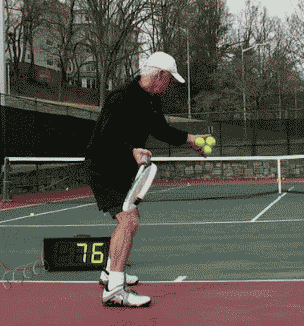
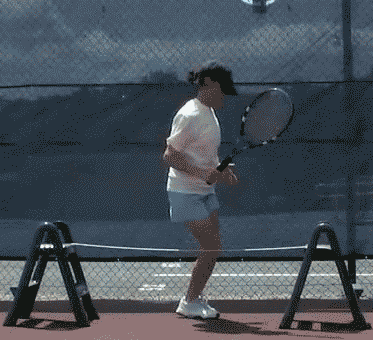
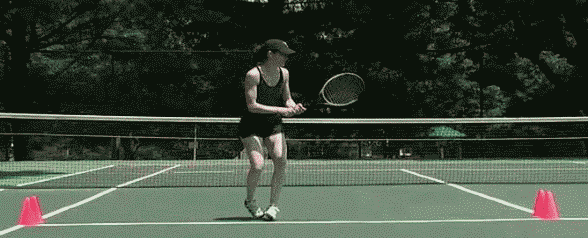
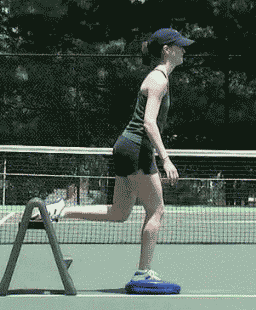
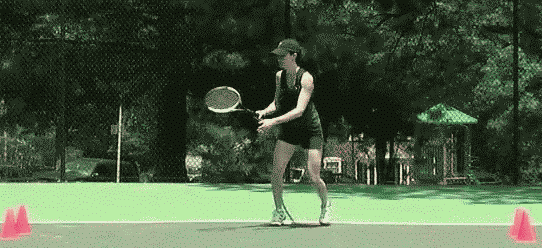
 Ray Brown, Ph.D.
Ray Brown, Ph.D.